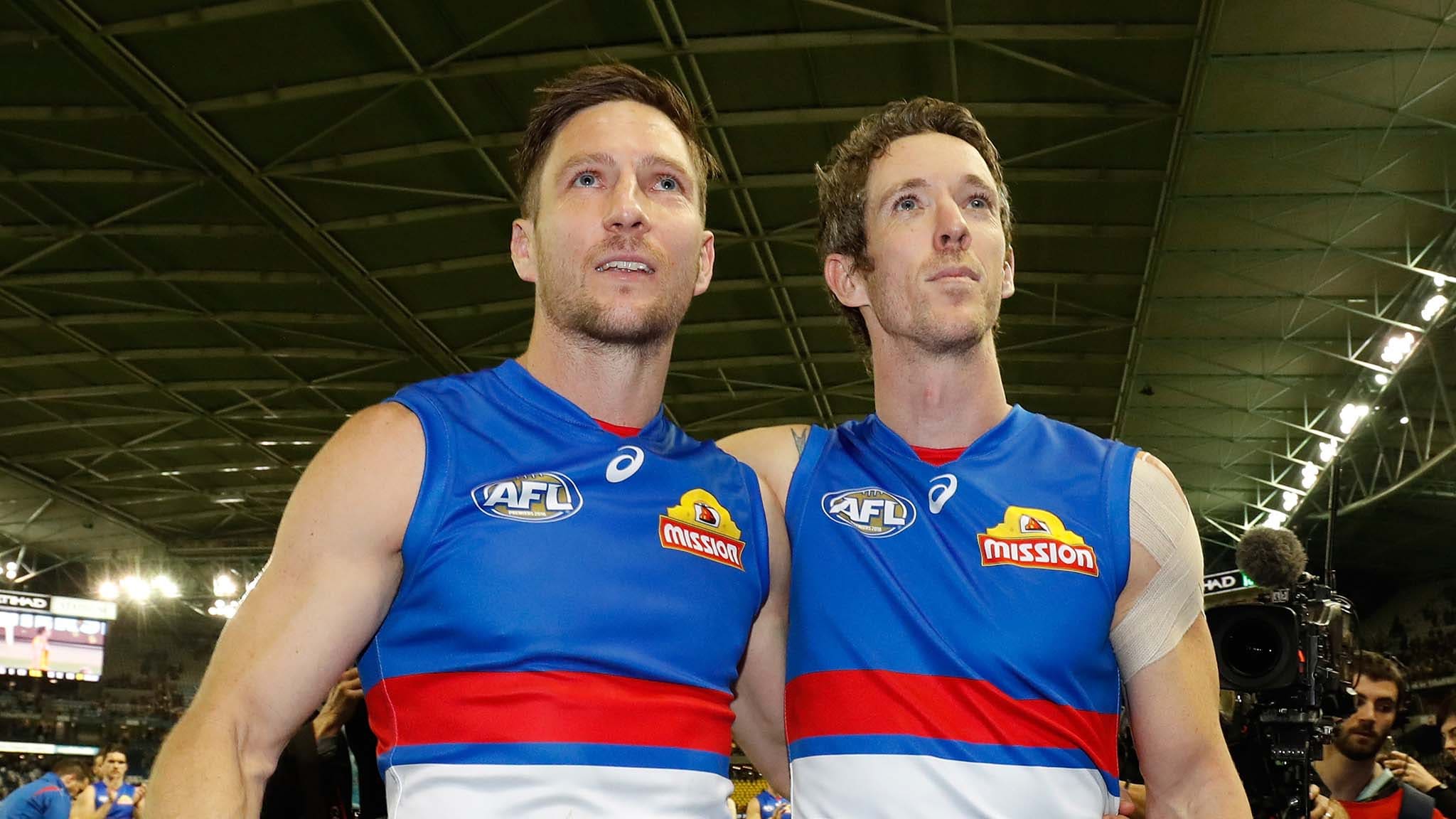THERE are good statistics and there are bad statistics.
No matter how disappointing your club's year was in 2017, we have decided to focus on the positives.
Thanks to Champion Data, AFL.com.au has assessed three key areas your club held its own in last season.

| KEY STAT | RESULT | LEAGUE RANK |
| Points for | 107.8 | #1 |
| Inside 50 to goal | 27.5% | #1 |
| Scoring from intercepts | 23.1% | #1 |
SUMMARY
As the minor premiers, it was only natural the Crows were going to lead the League in several key areas. Most notably was their ability to hit the scoreboard, with their high-powered attack scoring an average of 107.8 points per game. That was 18.7 points more than the competition average. They also were the most efficient at kicking goals once the ball went inside their attacking 50m arc, at 27.5 per cent compared to the League average of 24.7 per cent. Defender Jake Lever's departure to Melbourne, and Brodie Smith's absence due to a torn ACL, will impact the Crows' ability to score from intercepts. They led the League last year, scoring 23.1 per cent of the time they intercepted the ball from the opposition. - Lee Gaskin

| KEY STAT | RESULT | LEAGUE RANK |
| Free kick differential | +46 | #2 |
| Inside 50 to goal | 27.2% | #2 |
| Throw-in clearance differential | +1.2 | #4 |
SUMMARY
It's something Chris Fagan has pointed out a few times, and the numbers back it up – when the Lions get the ball inside 50, they're very efficient, they just don't do it often enough. They ranked second in the League for converting inside 50s to goals, and with the addition of Charlie Cameron, Cam Rayner and a fit-again Allen Christensen into the mix, the firepower is there to again take advantage of the forward entries in 2018. Despite being one of the youngest teams in the competition, the Lions were one of the most disciplined, ranking second in free kick differential. Rhys Mathieson (+17), Stefan Martin (+15) and Dayne Zorko (+9) were all major reasons. - Michael Whiting

| KEY STAT | RESULT | LEAGUE RANK |
| Kicking efficiency | 67.1% | #2 |
| Post clearance pressure | 1.66 | #4 |
| Forward half crumbs | 10.2 | #6 |
SUMMARY
Brendon Bolton honed his coaching skills under Alastair Clarkson at Hawthorn and the Hawks’ superior kicking skills provided the foundation for their three premierships this decade, so it’s hardly surprising that area has been one of Bolton’s major focuses since taking over at Ikon Park. After being ranked eighth for kicking efficiency in the previous four seasons, they rose to second last year. Carlton has also improved at applying pressure when the ball is out in the open in general play, ranking fourth in the 'pressure factor'. The Blues have become more adept at sharking the loose ball from marking contests, ranking sixth for forward-half crumbs. Matthew Wright is particularly good at this part of the game. - Howard Kotton
The Blues impressed with their kicking efficiency. Picture: AFL Photos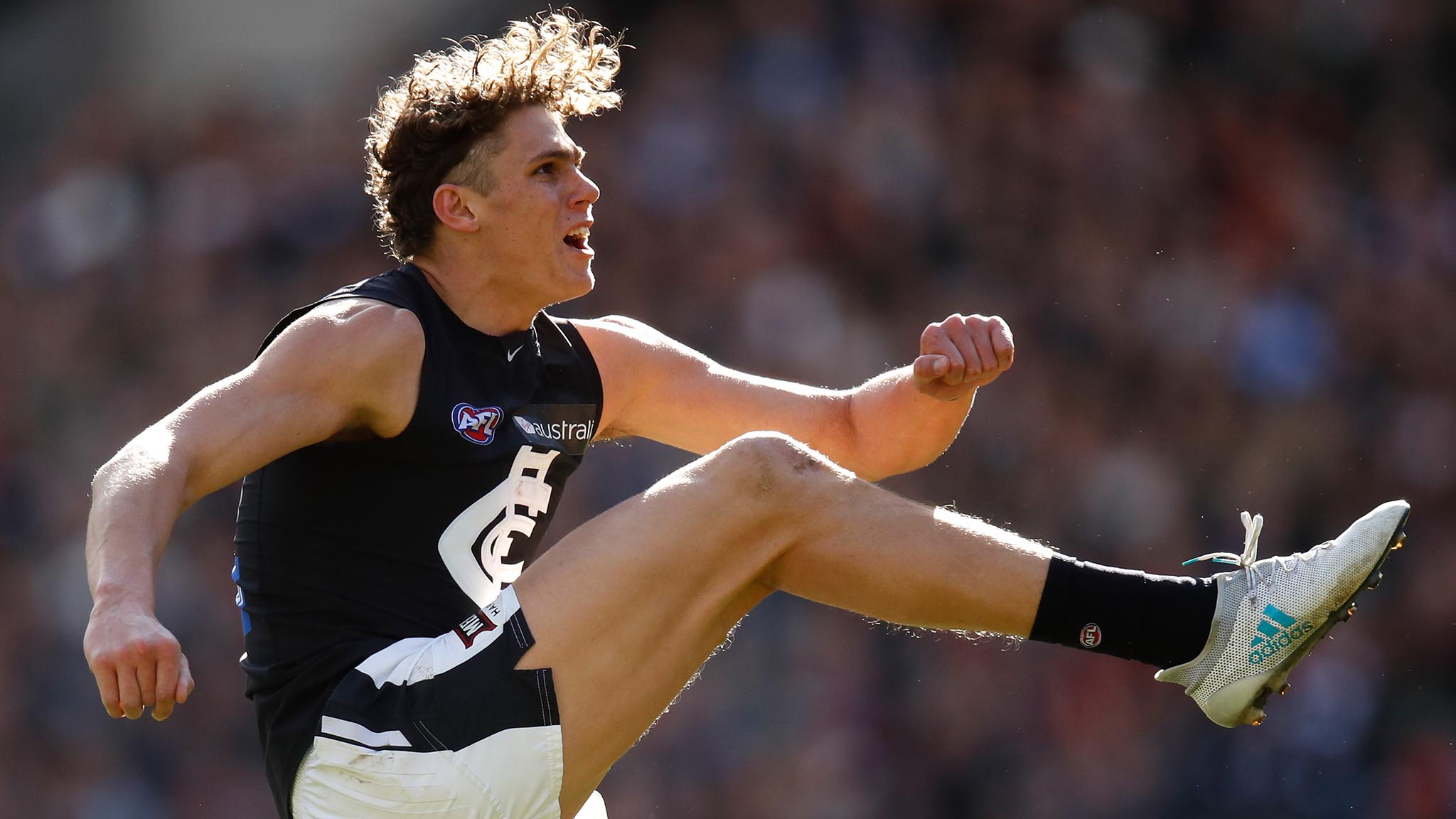

| KEY STAT | RESULT | LEAGUE RANK |
| Contested possession differential | +7.7 | #1 |
| Hit-out win rate | 48.5% | #2 |
| Clearance differential | +2.6 | #2 |
SUMMARY
Before last season, Champion Data ranked the Magpies' midfield as the AFL's best, and the Pies' engine room certainly excelled at winning the hard ball. They were No.1 in contested possession differential with an average of 7.7 more than their opponents, and were No.2 in clearance differential with 2.6 to the good. These results were boosted by Brodie Grundy's ruckwork, which lifted Collingwood to No.2 in the hit-out win rate at 48.5 per cent, well above the AFL average of 43.9 per cent. They could improve further in each category with champions Daniel Wells and Scott Pendlebury set to play more and young runners like Jordan De Goey to make further inroads, while Mason Cox has potential as a support ruckman. - Ben Collins

| KEY STAT | RESULT | LEAGUE RANK |
| Intercept to score | 22.4% | #2 |
| Inside 50 to score | 50.4% | #1 |
| Uncontested possession differential | +22.1 | #2 |
SUMMARY
The high-octane Bombers ranked third overall in scoring last year – behind only the South Australian teams – and much of that owed to their efficiency. All Australian defender Michael Hurley and his merry (backline) men, primarily Martin Gleeson, Mark Baguley and James Kelly, repeatedly repelled opposition attacks and launched scores. Essendon ranked only 12th for total inside 50s with 51.4 last year, but scored off more than half of them. That value for money – no doubt aided by having a dominant forward in Joe Daniher – makes more sense coupled with their impressive uncontested possession differential. Having more disposals under less pressure than the opposition will generally produce a more desirable result. - Marc McGowan

| KEY STAT | RESULT | LEAGUE RANK |
| Disposal efficiency | 73.6% | #6 |
| Centre clearance win | 45.7% | #4 |
| Forward half clearance to score | 42.0% | #2 |
SUMMARY
Excelling at stoppages has been a trademark under Ross Lyon and, even without Aaron Sandilands for half the season, the Dockers were elite at winning centre clearances (ranked fourth) in 2017. Never was that highlighted more vividly than the dying seconds against Richmond in round eight, when the 'A-team' of Sandilands, Nat Fyfe and Lachie Neale combined in the middle to set up David Mundy's match-winning shot after the siren. Fremantle was also outstanding (AFL No.2) at scoring from forward-half stoppages. The Dockers' disposal efficiency was marginally above average, but that stat can be pumped up in a variety of ways (short kicks, kicking backwards, handballs) and is not necessarily the best indication of quality ball use. - Travis King

| KEY STAT | RESULT | LEAGUE RANK |
| Contested possession differential | +7.4 | #2 |
| Points from stoppages | 35.5 | #3 |
| Kicks inside 50 retained | 51.2% | #2 |
SUMMARY
Patrick Dangerfield easily led the competition for contested possessions in 2017 with 430, which was a whopping 67 more than Dustin Martin. This, and the fact Joel Selwood was 14th with 286, was a large reason why the Cats were ranked second in contested possession differential, which means they averaged 7.4 more contested possessions than their opponent each week. They were third in scoring from stoppages, which was linked to possessing the leading winner of clearances from stoppages in the competition – Dangerfield, who accumulated 102 wins in that area. They ranked second at keeping the ball inside 50, which came with defensive efforts from their forwards and reflected why they were the second highest scoring team. Tom Hawkins was the leading tackler inside 50 from Sam Menegola (32) and Dangerfield (29), which showed they weren't totally reliant on the players known for their forward pressure (James Parsons, Nakia Cockatoo, Brandan Parfitt) to help lock the ball in. - Jennifer Phelan
'Danger' helped the Cats claim the No.2 ranking for contested possession differential. Picture: AFL Photos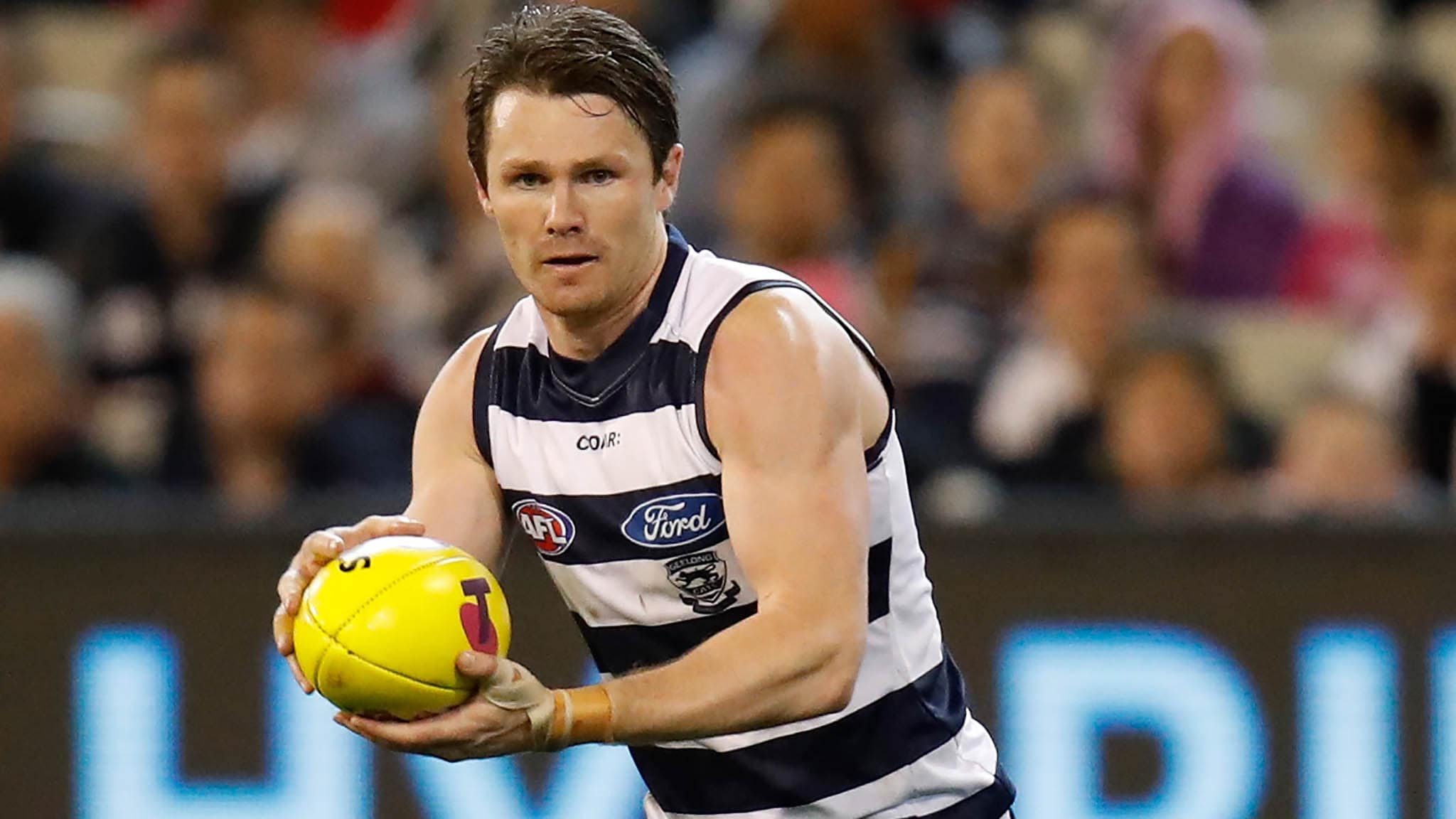

| KEY STAT | RESULT | LEAGUE RANK |
| Hit-out to advantage win rate | 14.3% | #2 (equal) |
| First possession to clearance | 46.0% | #2 |
| Kicking efficiency | 66.6% | #4 |
SUMMARY
With 209cm Jarrod Witts in the ruck and enjoying an excellent first season, it's little surprise Gold Coast ranked well in a couple of categories around the stoppages. They were second in the ratio of hit-outs to advantage and also second in converting the first possession to a clearance. In simple terms, when they touched the ball first, it usually resulted in a clearance. With Gary Ablett now back in Geelong, extra pressure will fall on the likes of David Swallow, Jarryd Lyons and Touk Miller to take advantage of Witts' ruck dominance in 2018. - Michael Whiting

| KEY STAT | RESULT | LEAGUE RANK |
| Disposal efficiency | 74.6% | #2 |
| Pre-clearance contested possession differential | +7.2 | #1 |
| Defensive 50 to score | 11.4% | #2 |
SUMMARY
Given their elite talent there’s little surprise that the Giants rank so high in disposal efficiency and pre-clearance contested possession differential, with the likes of Josh Kelly, Dylan Shiel, Stephen Coniglio, Callan Ward, Lachie Whitfield and Tom Scully capable of winning the footy inside, and using it well once in space. The third stat might give GWS fans a fright going forward. They were outstanding in transitioning the footy from deep in defence to score last season, being above the League average (9.5%), but with the two main architects in Zac Williams (injured) and Nathan Wilson (traded to Fremantle) missing in 2018, it will be interesting to see how they measure up this year. - Adam Curley

| KEY STAT | RESULT | LEAGUE RANK |
| Kicking efficiency | 70.4% | #1 |
| Points from forward half clearances | 17.6 | #3 |
| Disposals per turnover | 5.99 | #1 |
SUMMARY
No real surprises here. If you can’t kick, there’s been no place for you at Hawthorn and from the moment he first walked through the door at the end of 2004, coach Alastair Clarkson weeded out the poor kicks and placed a premium on recruiting those with elite foot skills. The Hawks have also long had crafty forwards, and if they win a clearance in the forward half they can quickly - and often - manufacture a goal. Aspects of the game the Hawks excel at have traditionally involved high skill level and what will be interesting this year is that renowned biomechanist and skills coach, David Rath, has left the club and now works for the AFL as head of coaching. - Ashley Browne

| KEY STAT | RESULT | LEAGUE RANK |
| Uncontested possession differential | +25 | #1 |
| Disposals | 405.2 | #1 |
| Tackles | 71.9 | #2 |
SUMMARY
Everything Melbourne does starts at the contest. One visit to training over pre-season will tell you that. The coaches make a specific point of drilling those principles into their players and it showed out in games last year, with the Demons ranking No.2 in the AFL for contested possessions. Their game style is built on that and that's why the Demons were so proficient in finding the football, and then possessing it, last season. However, some commentators were critical of the Demons for over-possessing the football at times and that shows out in the uncontested possession differential stat. When the opposition had the ball in their hands, the Demons worked overtime to win the footy back which is reflected in their tackling numbers. - Ben Guthrie
The Demons had plenty of the footy in season 2017. Picture: AFL Photos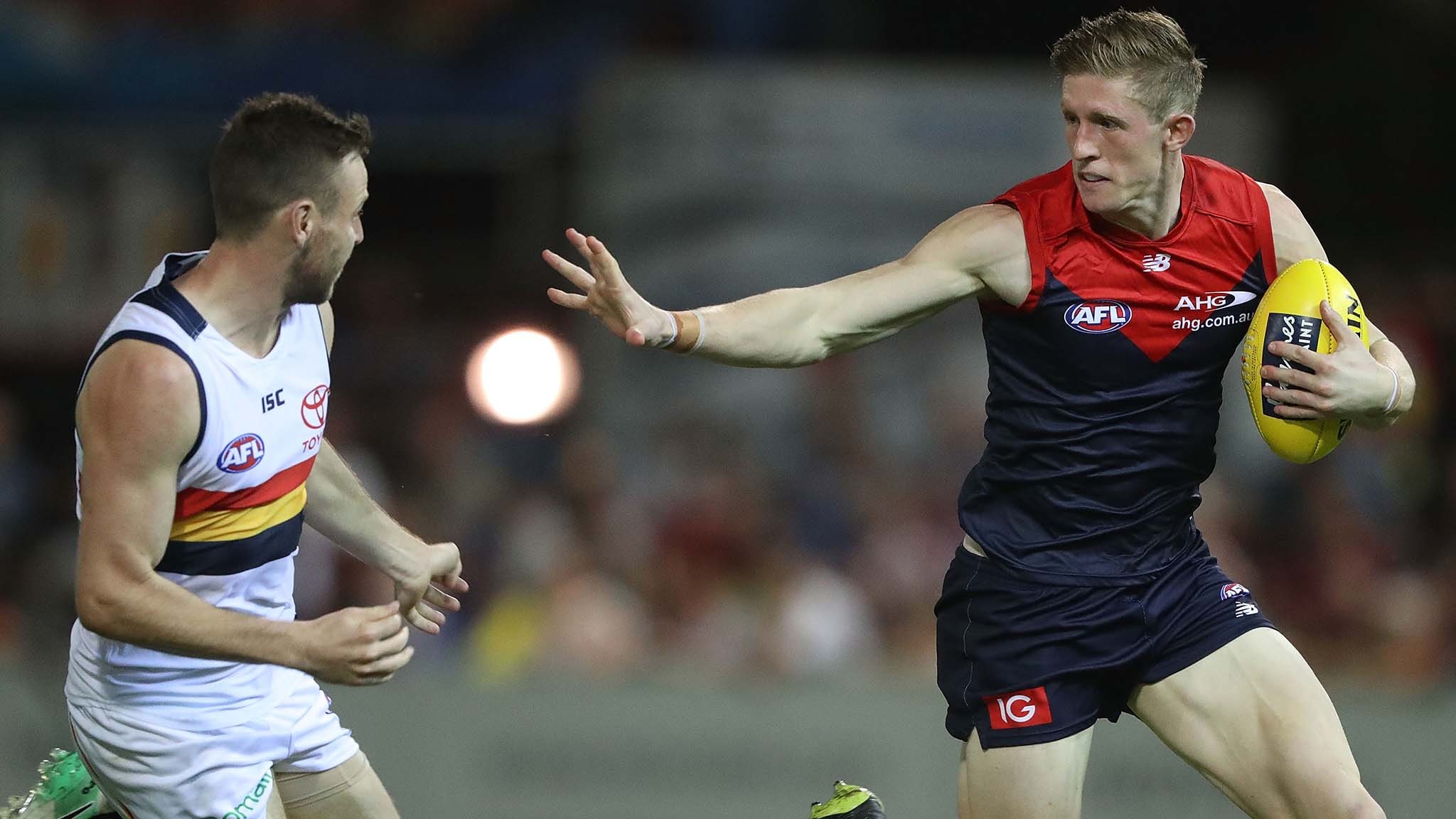

| KEY STAT | RESULT | LEAGUE RANK |
| Clanger kicks | 19.6 (third fewest) | #3 |
| Kicks inside 50 retained | 49.7% | #7 |
| Hit-out to advantage win rate | 14.3% | #2 (equal) |
SUMMARY
The Kangaroos' slide down the ladder in 2017 and veteran cleanout the past two off-seasons were well documented. But one area that hasn't been a problem in that transition period is their ball retention by foot. That includes kicks into the attacking 50, although it didn't translate into a major scoreboard impact for a variety of reasons. North was ninth in average inside 50s and total points. Interestingly, just one team had a better hit-out to advantage win rate than the Kangas despite No.1 ruckman Todd Goldstein's much-publicised form woes. The 2015 All Australian had support from Braydon Preuss and Majak Daw at times, and to a lesser degree Ben Brown, but he won more than 63 per cent of North's total hit-outs. Goldstein, Preuss and Daw are all rated as elite in hit-out to advantage win rate. - Marc McGowan

| KEY STAT | RESULT | LEAGUE RANK |
| Time in forward half differential | +7:08 | #1 |
| Forward half intercepts | 29.0 | #2 |
| Opposition score from intercept | 17.8% | #3 |
SUMMARY
The Power's forward pressure was critical in locking the ball in their forward half more than any team in the competition. The Power ranked No.1 in time in forward half differential, having the ball for an average of seven minutes and eight seconds more in their forward half than their opposition. Their forwards were also outstanding in winning the ball back from their rivals and forcing turnovers, ranked No.2 in the League for forward half intercepts, with 29 per game, compared to the League average of 24.2. Defensively, they were able to stop the opposition from scoring when the Power turned the ball over. The Power ranked third for opposition score from intercept at 17.8 per cent, compared to the League average of 20.9 per cent. - Lee Gaskin

| KEY STAT | RESULT | LEAGUE RANK |
| Inside 50 differential | +5.3 | #3 |
| Forward half intercepts | 29.2 | #1 |
| Forward 50 tackles | 14.3 | #1 |
SUMMARY
Richmond based its game on defensive pressure, but it was a style that had significant offensive benefits. Ranked No.3 in the AFL for inside 50 differential, the Tigers weren't fussy about how they got the ball in their forward zone, surging forward any way they could. It's a game style that worked because they had the best midfielder in the game, Dustin Martin (150 inside 50s, No.1 in the AFL), and a small forward line that could survive on unpredictable forward entries. If Daniel Rioli, Dan Butler and Jason Castagna didn't win the ball they scrapped for it, leading the AFL for forward 50 tackles (competition average 12.0). The team's ability to lead the AFL in forward half intercepts (competition average 24.2) is as much a product of their pressure forwards as their tall defenders, who regularly pressed high up the ground and positioned well to intercept their opponents' rushed rebounding attempts. - Nathan Schmook
The Tigers' mosquito fleet applied plenty of pressure on their way to the premiership. Picture: AFL Photos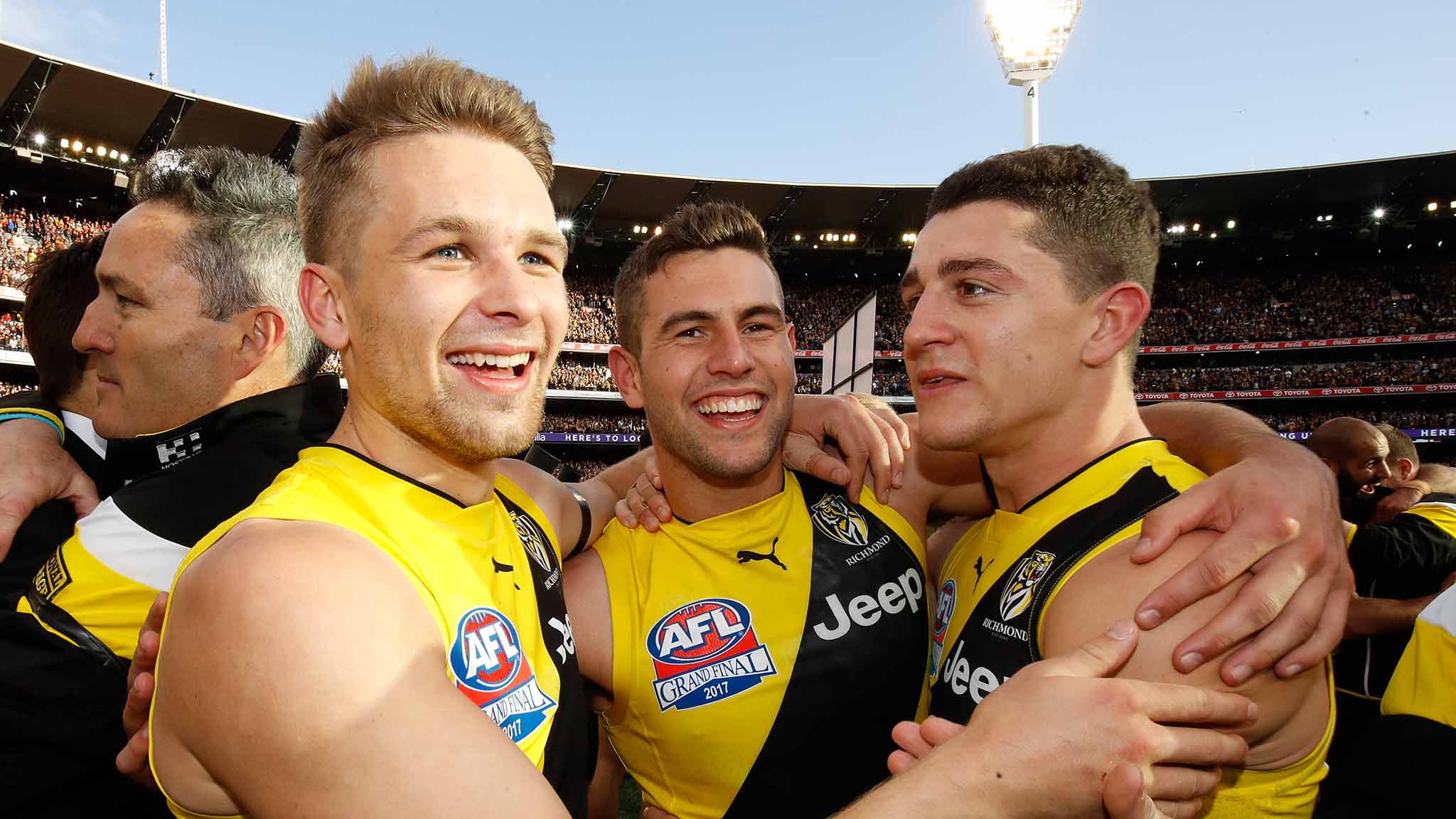

| KEY STAT | RESULT | LEAGUE RANK |
| Tackle differential | +6.6 | #1 |
| Inside 50 to score | 49.1% | #3 |
| Disposal efficiency | 74.2% | #4 |
SUMMARY
The Saints' trademark under Alan Richardson has been their tackling, and Jack Steele (158 tackles, No.4 in the AFL) is their leader. Hard-bodied midfielders Koby Stevens, Luke Dunstan, Jack Steven and Seb Ross all average more than four tackles a game, with the expectations for Richardson's onballers clear. Between them, Josh Bruce, Tim Membrey and Nick Riewoldt took 132 marks inside 50 in 2017. By targeting these marking players, the Saints were able to be efficient in converting forward entries to scores (competition average 46.7 per cent). They were inaccurate in front of goal, but creating chances was a big area of improvement compared to 2016, when they ranked 13th in this category. The combination of their high handball game (No.3 in the AFL) and a preference for safe ball-movement gives the Saints a high ranking for overall disposal efficiency (competition average 73.3 per cent). - Nathan Schmook

| KEY STAT | RESULT | LEAGUE RANK |
| Opposition inside 50 to score | 42.2% | #2 |
| Contested marks | 12.6 | #2 |
| Points from clearances differential | +8.8 | #2 |
SUMMARY
Sydney had the best backline in the League last season with their ability to stop teams scoring from their inside 50 entries well below the League average (46.7%), an impressive effort given that from rounds 1-6 when they went winless, they were ranked 11th (47.4%). From round seven until the end of the season they were ranked first (40.1%). Heath Grundy and Callum Mills are outstanding one-on-one players, and with key forward targets Lance Franklin and Sam Reid both ranked top 10 in the competition last year for contested marks, they give the Swans enormous strength in the air at both ends. Josh Kennedy and Luke Parker are elite stoppage players so the tough inside midfielders play a huge role in the team’s ability to score from clearances. - Adam Curley

| KEY STAT | RESULT | LEAGUE RANK |
| Inside 50 to goal | 27.4% | #2 |
| Clearance to score | 26.2% | #4 |
| Points from forward half turnovers | 33.3 | #4 |
SUMMARY
The Eagles' forward line – led by dual Coleman medallist Josh Kennedy – again ranked among the most dangerous last season, but was too often starved on a lack of supply. When West Coast's under-fire midfield fed the forwards, they converted better than just about anyone. The Eagles ranked second in the League for goals from inside 50s and were among the best at scoring from clearances (fourth) or forward half turnovers (fourth). The epic elimination final win over the Power saw the Eagles' attack at their most efficient. They booted 12.6 from just 46 inside 50s, but that drip-feed of supply was never going to be sustainable for a serious flag tilt and they came horribly unstuck in a semi-final belting from the Giants. - Travis King

| KEY STAT | RESULT | LEAGUE RANK |
| Defensive 50 to inside 50 | 22.3% | #1 |
| Forward half groundball gets | 53.2% | #3 |
| Hardball get differential | +7.7 | #3 |
SUMMARY
While not many things went to plan in the Bulldogs premiership defence last year, Luke Beveridge's men did manage to get a few things right. When it came to moving the ball efficiently from defence into their own 50m zone, the Dogs were the AFL's best team, at 22.3 per cent. Can they retain that lofty ranking with star defensive playmakers Robert Murphy and Matthew Boyd moving into retirement? They ranked third for their ability to win ground balls in their forward half (22.3 per cent), while their renowned expertise in contested situations saw them third again for winning the hard ball, with a differential of +7.7. - Ryan Davidson
How will the Bulldogs fare without Boyd and Murphy? Picture: AFL Photos